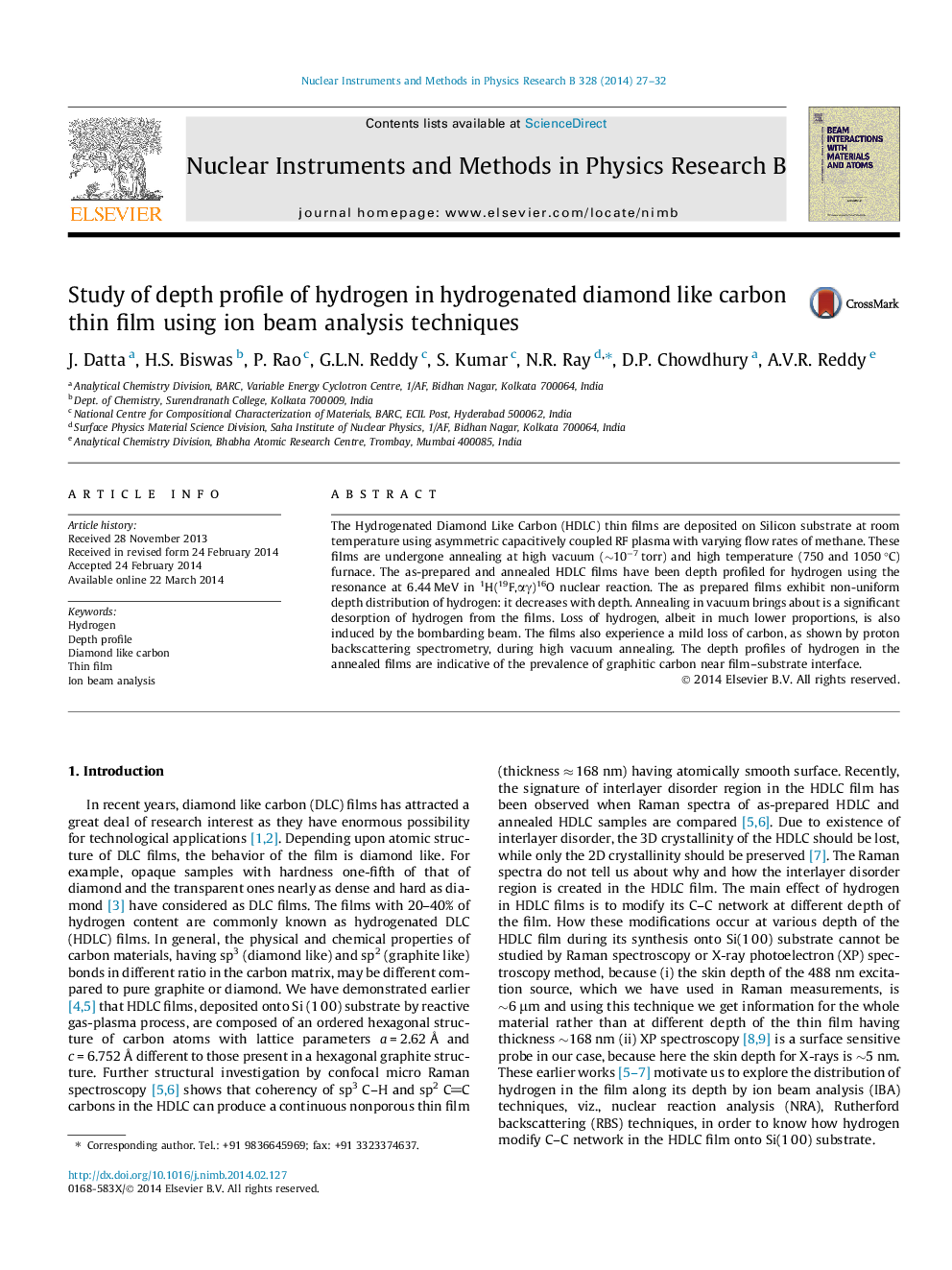| Article ID | Journal | Published Year | Pages | File Type |
|---|---|---|---|---|
| 8041849 | Nuclear Instruments and Methods in Physics Research Section B: Beam Interactions with Materials and Atoms | 2014 | 6 Pages |
Abstract
The Hydrogenated Diamond Like Carbon (HDLC) thin films are deposited on Silicon substrate at room temperature using asymmetric capacitively coupled RF plasma with varying flow rates of methane. These films are undergone annealing at high vacuum (â¼10â7 torr) and high temperature (750 and 1050 °C) furnace. The as-prepared and annealed HDLC films have been depth profiled for hydrogen using the resonance at 6.44 MeV in 1H(19F,αγ)16O nuclear reaction. The as prepared films exhibit non-uniform depth distribution of hydrogen: it decreases with depth. Annealing in vacuum brings about is a significant desorption of hydrogen from the films. Loss of hydrogen, albeit in much lower proportions, is also induced by the bombarding beam. The films also experience a mild loss of carbon, as shown by proton backscattering spectrometry, during high vacuum annealing. The depth profiles of hydrogen in the annealed films are indicative of the prevalence of graphitic carbon near film-substrate interface.
Related Topics
Physical Sciences and Engineering
Materials Science
Surfaces, Coatings and Films
Authors
J. Datta, H.S. Biswas, P. Rao, G.L.N. Reddy, S. Kumar, N.R. Ray, D.P. Chowdhury, A.V.R. Reddy,
